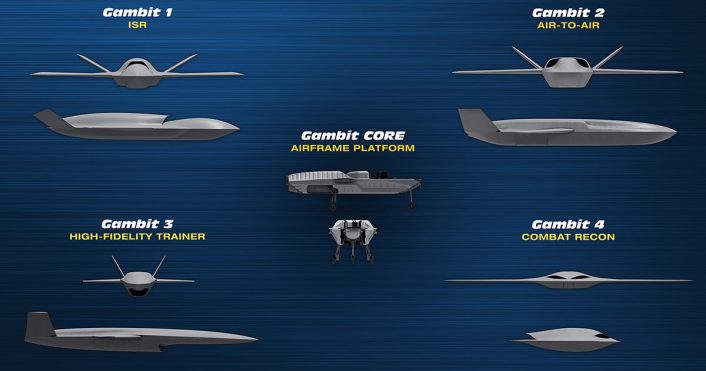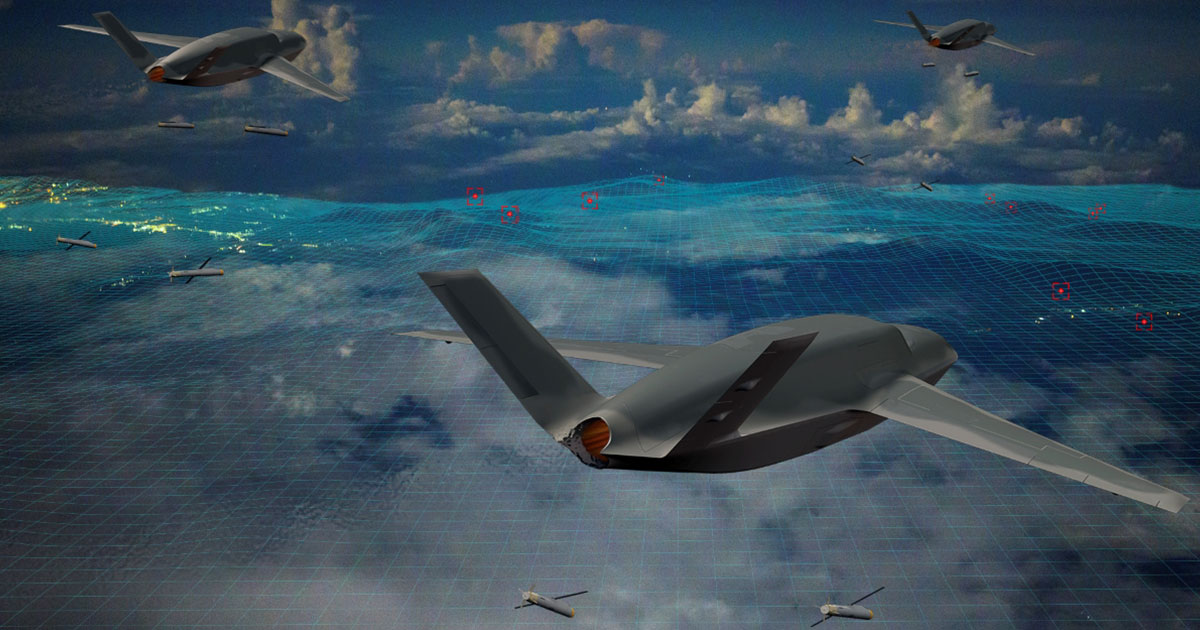The Gambit 6 UCAV will add air-to-ground capabilities to international collaborative fighter aircraft programs.
General Atomics Aeronautical Systems (GA-ASI) has introduced the latest version of the Gambit series of unmanned combat aerial vehicles (UCAV), called Gambit 6at the current International Fighter Conference in Rome, Italy. The new UCAV joins five other variants based on the common Gambit Series core.
Gambit 6
Gambit 6 will be a multirole collaborative combat aircraft (CCA), adding air-to-ground operations to its already available air-to-air capability. GA-ASI says the platform is optimized for roles such as Electronic Warfare (EW), Suppression of Enemy Air Defenses (SEAD) and precision deep strike.
The goal is to offer Gambit 6 for international CCA programs. In fact, the company says that “air forces around the world are seeking air-to-ground capable CCAs to enhance operational capabilities and address emerging threats in a denied environment.”
“These are real threats and they require real solutions,” said GA-ASI President David R. Alexander. “Gambit 6’s modular architecture and signature-reduced internal weapons bay enable easy integration of advanced autonomy, sensors and weapons systems, ensuring the aircraft can adapt to a wide range of operational scenarios.”

Gambit 6 appears externally similar to the YFQ-42A CCA being tested for the US Air Force, based on the original Gambit 2 concept. The rendering released by GA-ASI shows Gambit 6 launching what appear to be GBU-53/B StormBreaker precision-guided glide bombs.
The company says the new platform will be available for international procurement starting in 2027, with European versions to be delivered in 2029. In fact, GA-ASI is creating industry partnerships across Europe, paving the way for a possible introduction of the new systems to European operators.
Gambit
Gambit is a family of high-performance autonomous combat aircraft, designed to meet various mission requirements, including intelligence, surveillance and reconnaissance; multi-domain combat; advanced training; and stealth reconnaissance. The aircraft are based on a common “chassis”, known as the “Gambit Core”, which represents a significant proportion of the aircraft’s hardware, including landing gear, basic avionics and chassis.
Gambit variants are differentiated by their airframe, wing, engine, sensors and/or weapons, and each addresses different sets of missions. GA-ASI says this shared basing reduces costs, increases interoperability and accelerates the development of mission-specific variants.


This is the same approach to the ‘genus/species’ concept that GA-ASI developed with the US Air Force Research Laboratory (AFRL) as part of the Low Cost Attritable Aircraft Platform Sharing (LCAAPS) program. The XQ-67A External Sensing Station (OBSS), also manufactured by GA-ASI, is also based on the same concept.
Before Gambit 6, the company already mentioned five different variants: Gambit 1, focused on Intelligence, Surveillance and Reconnaissance (ISR); Gambit 2, which integrates the use of air-to-air weapons; Gambit 3, a high-fidelity target drone; Gambit 4, a stealthy, long-endurance ISR drone; and Gambit 5, a UCAV capable of carrying CATOBAR (Catapult Assisted Takeoff Barrier Arrested Recovery).
GA-ASI and CCA
GA-ASI is building a considerable portfolio of collaborative fighter aircraft platforms. In fact, the company is already working on the US Air Force CCA program with two YFQ-42s in flight, has been selected to develop the conceptual design of a carrier-based CCA for the US Navy, and is now working on CCA for international operators.
The company revealed on Nov. 3 that it flew a second YFQ-42A, expanding the test campaign for the Air Force’s new unmanned fighters. The YFQ-42A is designed for semi-autonomous air-to-air operations and is based on the “genus-species” approach pioneered with the XQ-67A External Sensing Station (OBSS).


GA-ASI says it leveraged advanced model-based digital engineering to accelerate development of the aircraft while optimizing capabilities for the future air domain. A central element of the program is the autonomy core that will allow the YFQ-42 to operate alongside manned aircraft.
Lessons learned on this platform will surely flow into the Navy’s CCA program, apparently based on the carrier-capable Gambit 5, and now the new Gambit 6, based on the Gambit 2 as well as the YFQ-42A. This would further increase interoperability between the two US services and allied operators.
The interest from European operators is real and recently the Royal Netherlands Air Force (RNLAF) has become the first European air force to formally join the US Air Force’s CCA program. The agreement is reported to give the Netherlands “full access” to the US Air Force’s CCA program “at all levels.”



